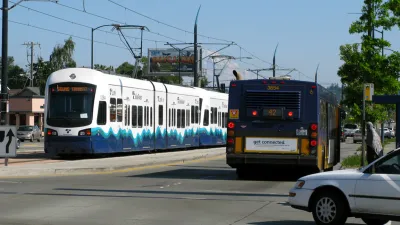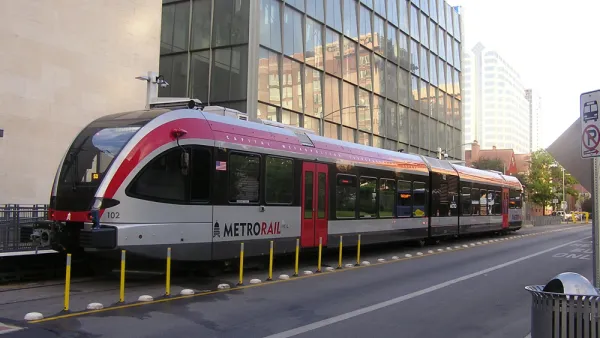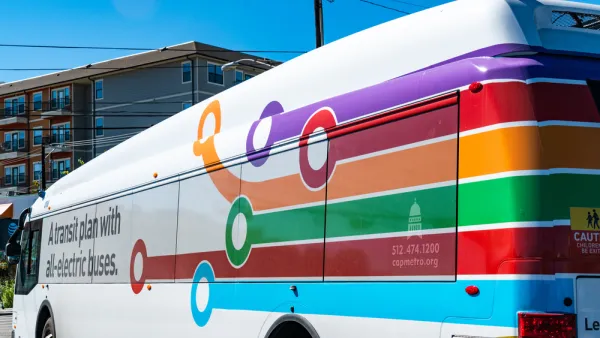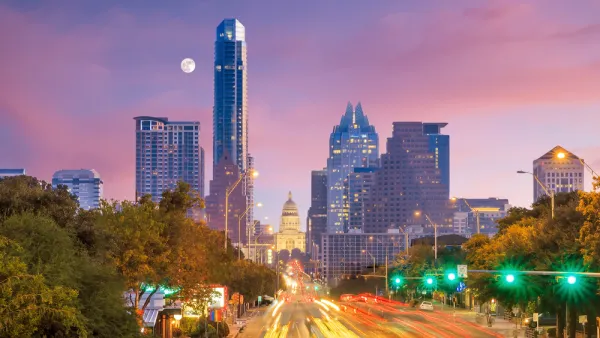Even with the fiscal uncertainty of the pandemic, voters around the country overwhelmingly supported new funding for public transit projects.

Given the number of U.S. jurisdictions where voters approved new public transit funding programs in the November election, it might seem like government's have a mandate to support transit through the trying economic and social uncertainties of the pandemic.
An article by TransitCenter surveys the election results for lessons to be inferred by the messages sent by voters in November.
First up: the few measures that didn't pass were "designed to appeal to people who don’t ride transit," according to the article. "The strategy of diluting transit investment to get more votes may have worked in the past, but the winning formula this cycle was different."
"In Austin, San Antonio, Seattle, and other cities, voters not only supported transit — they supported smart, rider-focused transit investment. These winning initiatives will benefit entire transit networks by investing in frequent service on several routes. And in Austin, high-capacity expansion projects will be built where such large-scale investment is justified — within walking distance of where lots of people live and work."
The big wins in those three cities are contrasted with the success of ballot initiatives from recent history in Denver and Los Angeles, for example, which tended to focus on large capital investment programs to expand the transit system to various corners of the region.
In addition to dissecting the success of the San Antonio, Austin, and Seattle transit votes, the article also digs into the notable failure for public transit in November: the "Get Moving" plan in Portland.
FULL STORY: Good Transit Policy Was Good Politics This Election Day

National Parks Layoffs Will Cause Communities to Lose Billions
Thousands of essential park workers were laid off this week, just before the busy spring break season.

Retro-silient?: America’s First “Eco-burb,” The Woodlands Turns 50
A master-planned community north of Houston offers lessons on green infrastructure and resilient design, but falls short of its founder’s lofty affordability and walkability goals.

Delivering for America Plan Will Downgrade Mail Service in at Least 49.5 Percent of Zip Codes
Republican and Democrat lawmakers criticize the plan for its disproportionate negative impact on rural communities.

Test News Post 1
This is a summary

Test News Headline 46
Test for the image on the front page.

Balancing Bombs and Butterflies: How the National Guard Protects a Rare Species
The National Guard at Fort Indiantown Gap uses GIS technology and land management strategies to balance military training with conservation efforts, ensuring the survival of the rare eastern regal fritillary butterfly.
Urban Design for Planners 1: Software Tools
This six-course series explores essential urban design concepts using open source software and equips planners with the tools they need to participate fully in the urban design process.
Planning for Universal Design
Learn the tools for implementing Universal Design in planning regulations.
EMC Planning Group, Inc.
Planetizen
Planetizen
Mpact (formerly Rail~Volution)
Great Falls Development Authority, Inc.
HUDs Office of Policy Development and Research
NYU Wagner Graduate School of Public Service





























